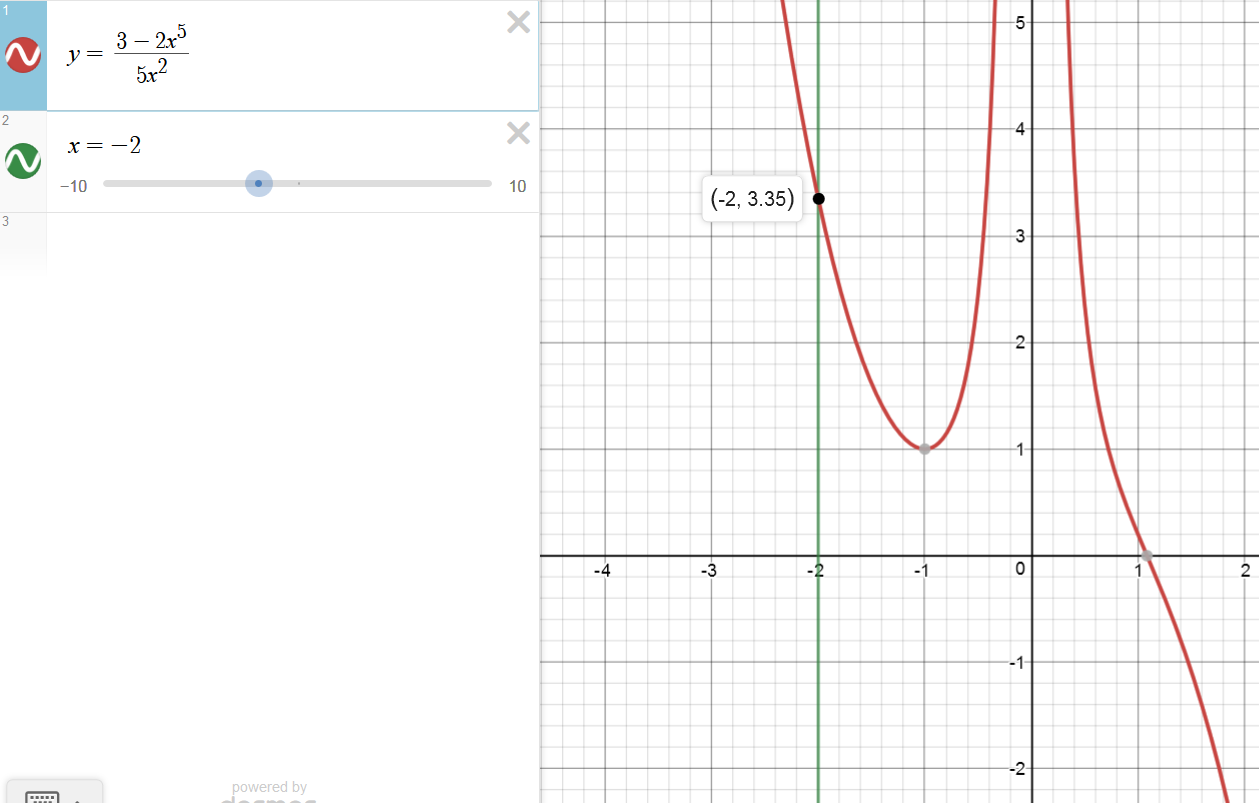Suppose
\(f(x) \)
is a rational function such that \(3 f \left( \frac{1}{x} \right) + \frac{2f(x)}{x} = x^2\)
for all \(x \neq 0\). Find \(f(-2)\).
\(\begin{array}{|lrclcl|} \hline & 3f(\frac1x) + \frac2x f(x) &=& x^2 \\ & 3f(\frac1x) &=& x^2 - \frac2x f(x) \\ & f(\frac1x) &=& \frac{x^2}{3} - \frac{2}{3x} f(x) \qquad (1) \\ \\ \text{Set }x=\frac1x: & 3f(x) + 2x f(\frac1x) &=& \frac{1}{x^2} \\ & 2x f(\frac1x) &=& \frac{1}{x^2}-3f(x) \\ & f(\frac1x) &=& \frac{1}{2x^3}-\frac{3}{2x}f(x) \qquad (2) \\\\ \hline (1) = (2): & \frac{x^2}{3} - \frac{2}{3x} f(x) &=& \frac{1}{2x^3}-\frac{3}{2x}f(x) \\ & \frac{3}{2x}f(x) - \frac{2}{3x} f(x) &=& \frac{1}{2x^3} -\frac{x^2}{3} \\ & f(x)\left( \frac{3}{2x} - \frac{2}{3x} \right) &=& \frac{3-2x^5}{6x^3} \\ & f(x)\left( \frac{9x-4x}{6x^2} \right) &=& \frac{3-2x^5}{6x^3} \\ & f(x)\left( \frac{5x}{6x^2} \right) &=& \frac{3-2x^5}{6x^3} \\ & f(x)\left( \frac{5x}{1} \right) &=& \frac{3-2x^5}{x} \\\\ & \mathbf{f(x)} & \mathbf{=} & \mathbf{\dfrac{3-2x^5}{5x^2}} \\ \hline \end{array} \)
The rational function is \(f(x) = \dfrac{3-2x^5}{5x^2}\)
\(f(-2)=\ ?\)
\(\begin{array}{|rclcl|} \hline f(-2) &=& \frac{3-2(-2)^5}{5(-2)^2} \\ &=& \frac{3+2^6}{5\cdot 4} \\ &=& \frac{3+64}{20} \\ &=& \frac{67}{20} \\ \mathbf{f(-2)} & \mathbf{=} & \mathbf{3.35} \\ \hline \end{array}\)
\(\text{ $f(-2)$ is $3.35$ }\)
graph:

